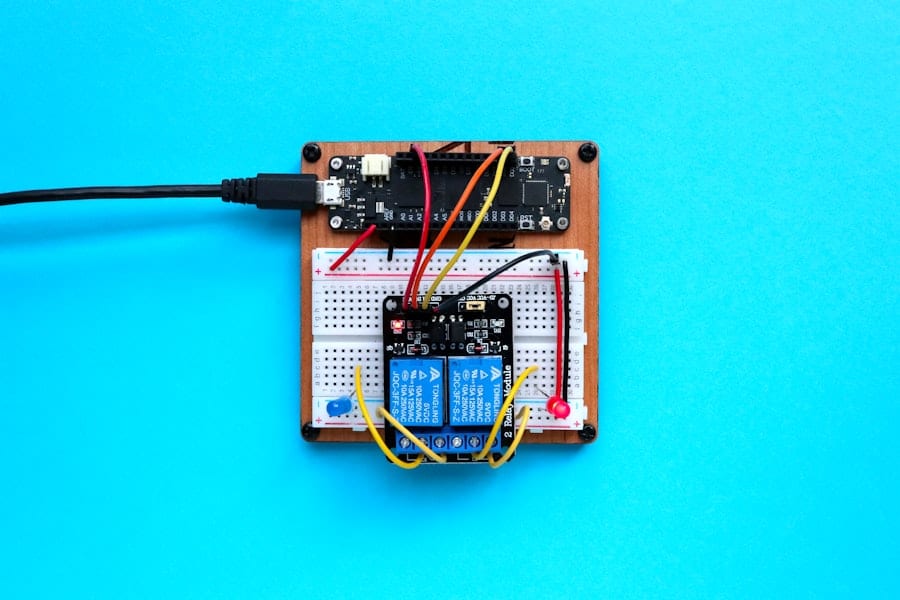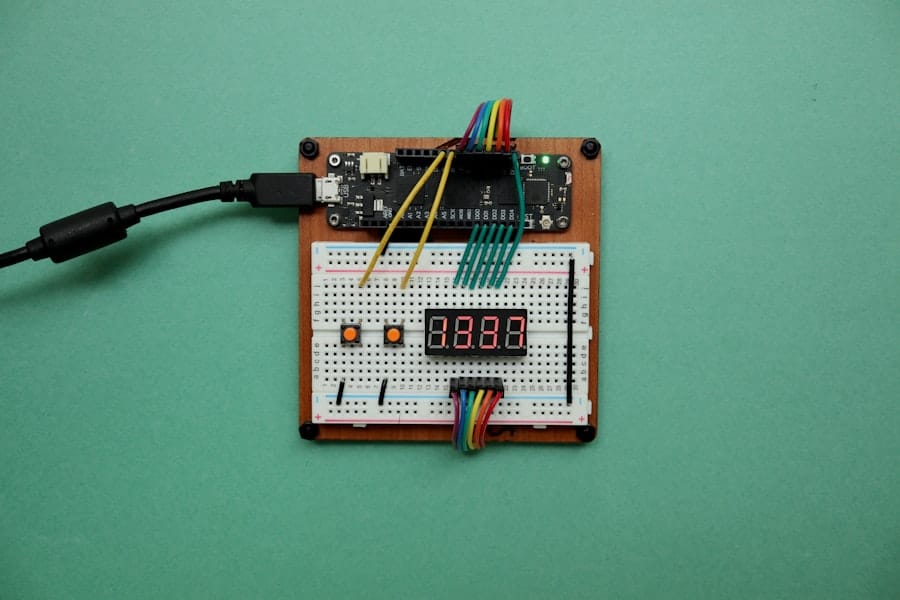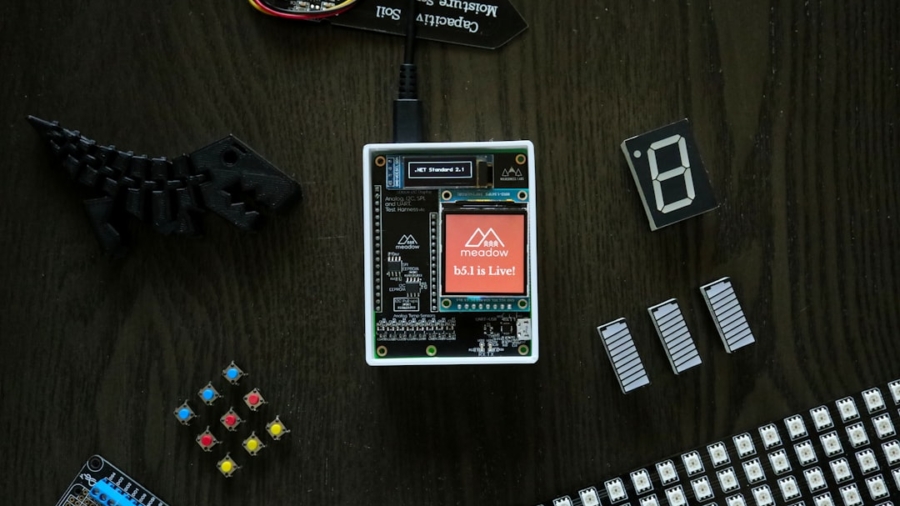The Internet of Things (IoT) has revolutionized the way we interact with our environment, enabling a seamless connection between the physical and digital worlds. At the heart of this transformation are IoT sensors, which serve as the critical components that gather data from the surrounding environment. These sensors can monitor a wide array of parameters, including temperature, humidity, motion, and light levels, among others.
By collecting real-time data, IoT sensors empower individuals and organizations to make informed decisions, optimize processes, and enhance overall efficiency. The proliferation of IoT sensors has been driven by advancements in technology, including miniaturization, wireless communication, and data analytics. As these sensors become more affordable and accessible, their applications span various sectors such as healthcare, agriculture, transportation, and environmental monitoring.
The integration of IoT sensors into everyday life not only enhances operational efficiency but also contributes to sustainability efforts by providing insights that can lead to reduced resource consumption and waste.
Key Takeaways
- IoT sensors play a crucial role in collecting data for various applications such as monitoring air quality, tracking water usage, managing energy consumption, optimizing waste management, improving agriculture practices, and enhancing transportation efficiency.
- Monitoring air quality using IoT sensors helps in identifying pollution sources and taking necessary measures to improve air quality for public health and environmental sustainability.
- Tracking water usage with IoT sensors enables efficient water management, leak detection, and conservation efforts in residential, commercial, and industrial settings.
- Managing energy consumption through IoT sensors allows for real-time monitoring, analysis, and optimization of energy usage to reduce costs and environmental impact.
- Optimizing waste management using IoT sensors involves smart waste bins, monitoring fill levels, and implementing efficient collection routes to improve waste collection and recycling processes.
Monitoring Air Quality
Air quality monitoring is one of the most pressing applications of IoT sensors, particularly in urban areas where pollution levels can significantly impact public health. IoT air quality sensors are capable of measuring pollutants such as particulate matter (PM2.5 and PM10), nitrogen dioxide (NO2), sulfur dioxide (SO2), and ozone (O3). These sensors can be deployed in various locations, from busy roadways to residential neighborhoods, providing a comprehensive view of air quality across different environments.
For instance, cities like Los Angeles have implemented networks of IoT air quality sensors to track pollution levels in real-time. This data is invaluable for city planners and public health officials as it allows them to identify pollution hotspots and implement targeted interventions. Moreover, citizens can access this information through mobile applications, empowering them to make informed decisions about outdoor activities based on current air quality conditions.
The integration of IoT sensors in air quality monitoring not only enhances public awareness but also fosters community engagement in environmental issues.
Tracking Water Usage

Water scarcity is a growing concern worldwide, making the efficient management of water resources more critical than ever. IoT sensors play a pivotal role in tracking water usage across various sectors, including residential, agricultural, and industrial applications. By employing smart water meters equipped with IoT technology, users can monitor their water consumption in real-time, leading to more responsible usage and conservation efforts.
In agriculture, for example, IoT sensors can be deployed in fields to monitor soil moisture levels.
A case study in California demonstrated that farmers using IoT-based irrigation systems reduced water usage by up to 30% while maintaining crop yields.
This not only conserves precious water resources but also reduces operational costs for farmers. In urban settings, smart water meters can detect leaks in real-time, alerting homeowners or municipal authorities to potential issues before they escalate into costly repairs or significant water loss. Cities like Barcelona have implemented such systems, resulting in a substantial reduction in water wastage and improved overall efficiency in water distribution networks.
The ability to track water usage through IoT sensors is transforming how we manage this vital resource.
Managing Energy Consumption
Energy consumption management is another critical area where IoT sensors are making a significant impact. With the increasing demand for energy and the urgent need to transition to sustainable sources, the integration of IoT technology into energy systems is essential for optimizing consumption patterns. Smart meters equipped with IoT sensors provide real-time data on energy usage, allowing consumers and businesses to monitor their consumption habits closely.
For instance, residential users can access detailed insights into their energy usage patterns through mobile applications connected to smart meters. This information enables them to identify peak usage times and adjust their habits accordingly, such as running appliances during off-peak hours when energy rates are lower. In commercial settings, businesses can leverage IoT sensors to monitor energy consumption across different departments or equipment, leading to targeted energy-saving initiatives.
Moreover, utility companies are increasingly adopting IoT technology to enhance grid management. By deploying sensors throughout the electrical grid, utilities can monitor load conditions and detect outages more efficiently. This proactive approach not only improves service reliability but also facilitates the integration of renewable energy sources into the grid.
For example, Pacific Gas and Electric has implemented an advanced metering infrastructure that utilizes IoT sensors to optimize energy distribution and reduce operational costs.
Optimizing Waste Management
Waste management is a critical challenge faced by cities worldwide, with increasing urbanization leading to higher waste generation rates. IoT sensors are transforming waste management practices by providing real-time data on waste levels in bins and containers. This information allows municipalities to optimize collection routes and schedules based on actual needs rather than fixed schedules.
For example, cities like Seoul have implemented smart waste bins equipped with IoT sensors that monitor fill levels. When a bin reaches a certain capacity, it sends an alert to waste management services, prompting timely collection. This approach not only reduces operational costs associated with unnecessary pickups but also minimizes carbon emissions from collection vehicles by optimizing routes based on real-time data.
By analyzing data from smart bins, municipalities can identify trends in waste generation and develop targeted educational campaigns to encourage recycling and composting among residents. The integration of IoT sensors into waste management systems is paving the way for more sustainable urban environments.
Improving Agriculture Practices

The agricultural sector is undergoing a significant transformation thanks to the adoption of IoT sensors that enhance farming practices and improve crop yields. Precision agriculture relies heavily on data collected from various sensors deployed throughout fields. These sensors monitor soil conditions, weather patterns, crop health, and even pest activity, providing farmers with actionable insights that drive decision-making.
For instance, soil moisture sensors can inform farmers when irrigation is necessary based on real-time data rather than relying on guesswork or outdated practices. This targeted approach not only conserves water but also ensures that crops receive the optimal amount of moisture for growth. A study conducted by the University of Nebraska found that farmers using soil moisture sensors increased their corn yields by an average of 15% while reducing irrigation costs by 20%.
Furthermore, IoT sensors can be integrated with drones equipped with imaging technology to monitor crop health from above. By analyzing aerial imagery alongside ground-level data collected from sensors, farmers can identify areas of stress or disease within their fields early on. This proactive approach allows for timely interventions that can save entire crops from potential losses.
The combination of IoT technology and agriculture is fostering a new era of farming that prioritizes efficiency and sustainability.
Enhancing Transportation Efficiency
Transportation systems are increasingly leveraging IoT sensors to enhance efficiency and reduce congestion in urban areas. Smart traffic management systems utilize a network of sensors placed at intersections and along roadways to monitor traffic flow in real-time. This data enables city planners to optimize traffic signals based on current conditions rather than relying on fixed timing schedules.
For example, cities like San Francisco have implemented adaptive traffic signal systems that adjust signal timings based on real-time traffic data collected from IoT sensors. This dynamic approach has been shown to reduce travel times by up to 25% during peak hours while also decreasing emissions from idling vehicles. Additionally, public transportation systems are utilizing IoT technology to provide real-time updates on bus and train arrivals, improving the overall user experience for commuters.
Moreover, fleet management companies are adopting IoT sensors to monitor vehicle performance and driver behavior. By collecting data on fuel consumption, maintenance needs, and driving patterns, companies can optimize routes and reduce operational costs significantly. A case study involving a logistics company revealed that implementing IoT-based fleet management solutions led to a 15% reduction in fuel costs within the first year of adoption.
Conclusion and Future Outlook
The integration of IoT sensors across various sectors is reshaping how we interact with our environment and manage resources efficiently. From monitoring air quality to optimizing waste management practices, these technologies are driving significant advancements in sustainability and operational efficiency. As the demand for smart solutions continues to grow, we can expect further innovations in sensor technology that will enhance data collection capabilities and improve connectivity.
Looking ahead, the future of IoT sensors appears promising as advancements in artificial intelligence (AI) and machine learning (ML) will enable even more sophisticated data analysis and predictive capabilities. The convergence of these technologies will allow for more proactive decision-making across sectors such as healthcare, agriculture, transportation, and environmental monitoring. As we continue to embrace the potential of IoT sensors, we move closer to creating smarter cities and more sustainable practices that benefit both society and the planet as a whole.
In the realm of environmental sustainability, the article “How IoT Sensors Monitor and Reduce Environmental Footprints” provides valuable insights into how technology can aid in minimizing ecological impacts. A related piece that complements this discussion is The Top 5 Smartwatches of 2023. This article explores the latest advancements in smartwatch technology, highlighting features that not only enhance personal convenience but also contribute to environmental awareness. By integrating IoT capabilities, these smartwatches can track and encourage eco-friendly habits, making them a perfect companion for those looking to reduce their environmental footprint.
FAQs
What are IoT sensors?
IoT sensors are devices that collect data from the environment and transmit it to a central system using the internet. These sensors can measure various parameters such as temperature, humidity, air quality, and more.
How do IoT sensors monitor environmental footprints?
IoT sensors can monitor environmental footprints by collecting data on energy consumption, waste production, and emissions. This data can then be used to identify areas for improvement and track the effectiveness of environmental initiatives.
How do IoT sensors reduce environmental footprints?
IoT sensors can help reduce environmental footprints by providing real-time data that allows for more efficient resource management. For example, sensors can optimize energy usage, reduce water waste, and minimize emissions from industrial processes.
What are some examples of IoT sensors used for environmental monitoring?
Examples of IoT sensors used for environmental monitoring include air quality sensors, water quality sensors, soil moisture sensors, and energy consumption sensors. These sensors can be deployed in various settings such as smart buildings, industrial facilities, and agricultural fields.
What are the benefits of using IoT sensors to monitor and reduce environmental footprints?
The benefits of using IoT sensors for environmental monitoring and footprint reduction include improved resource efficiency, cost savings, better compliance with environmental regulations, and a positive impact on public health and well-being.

